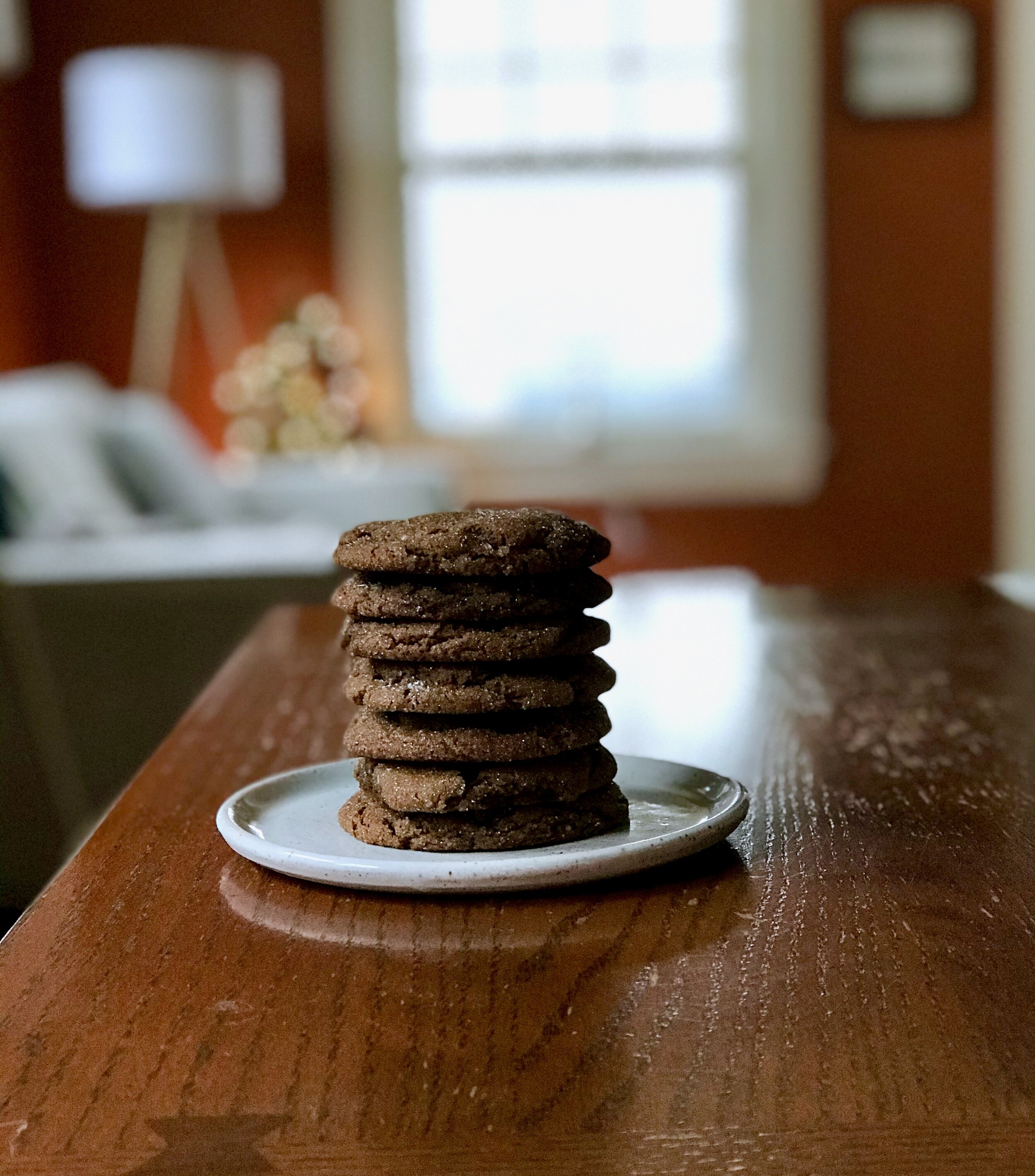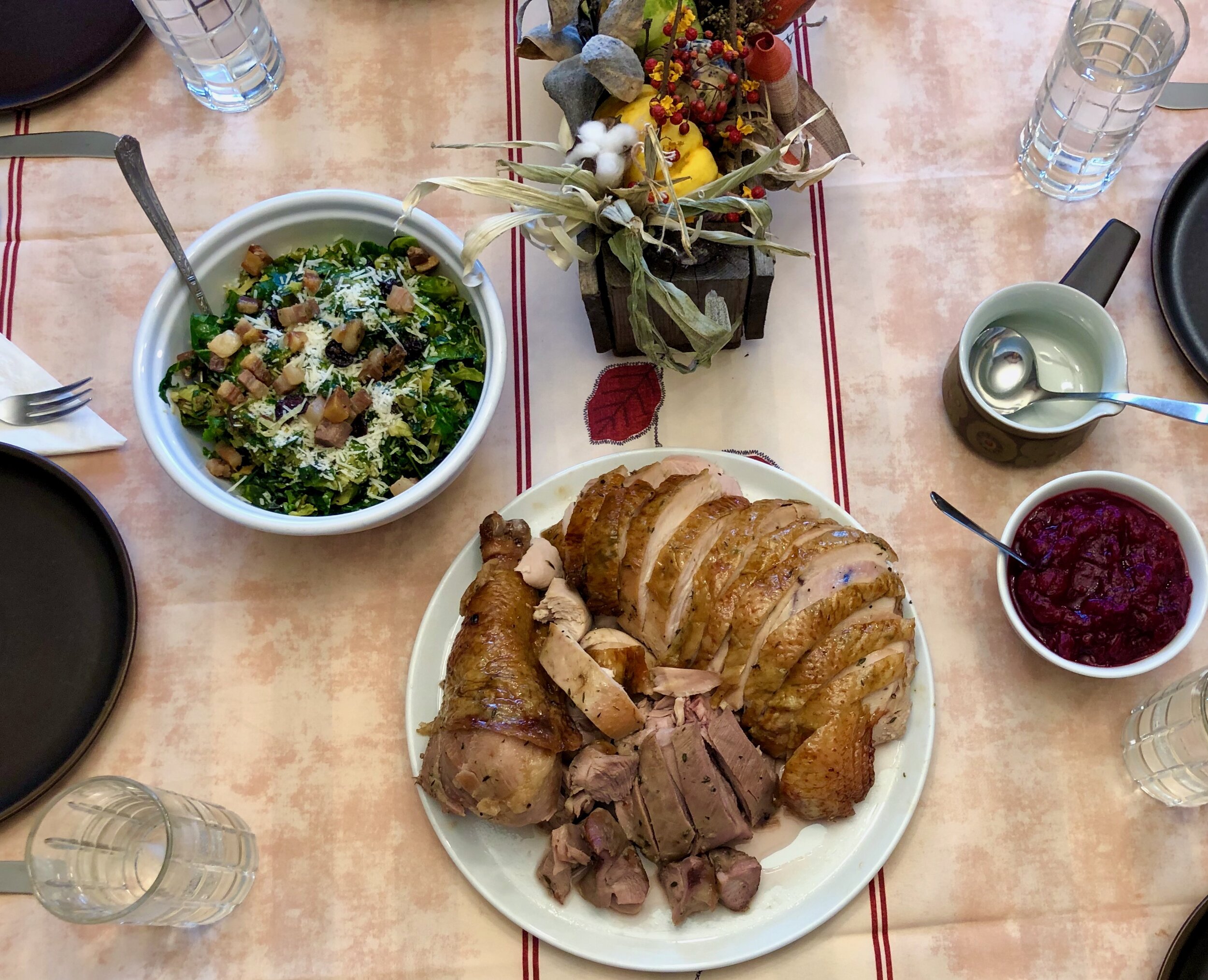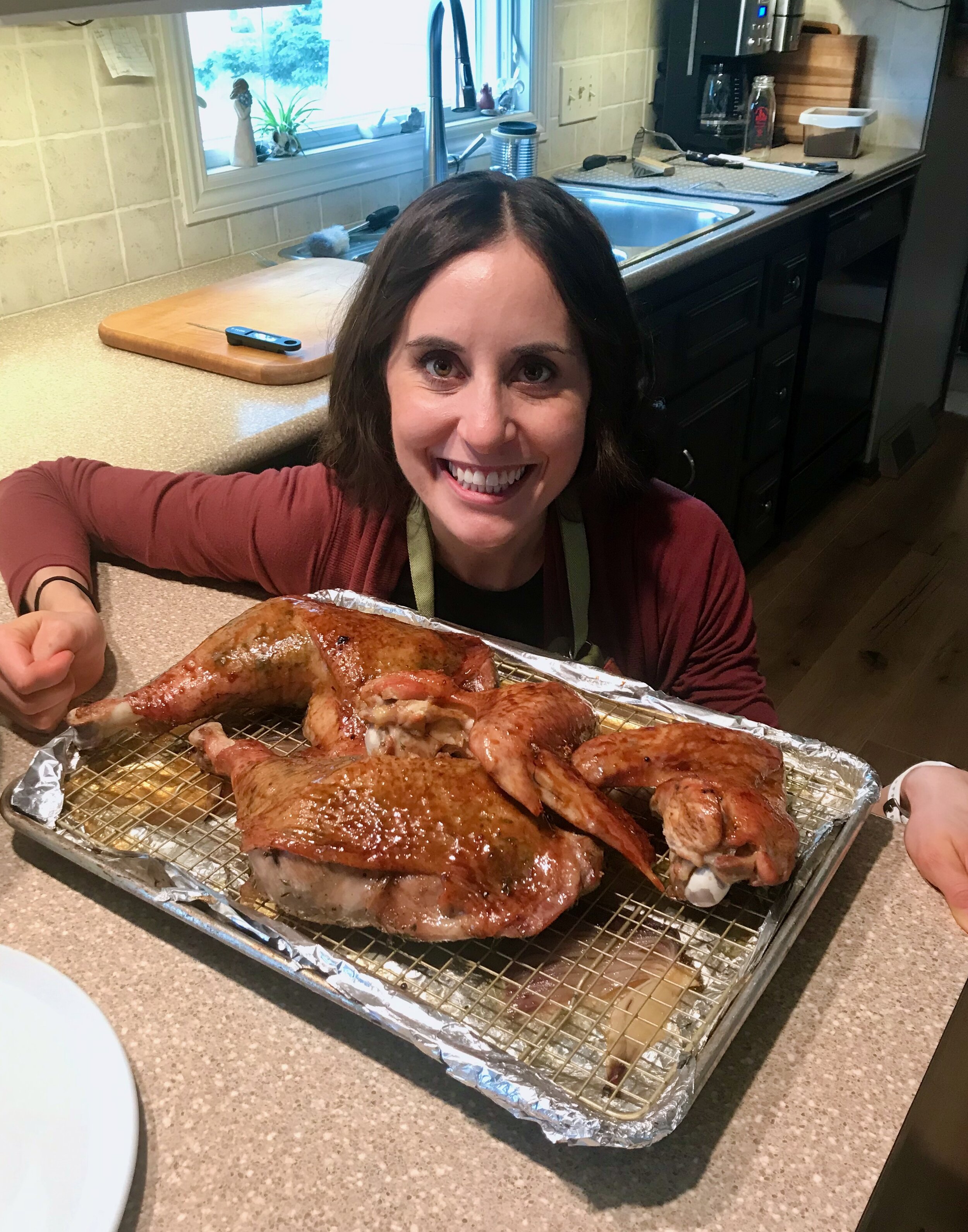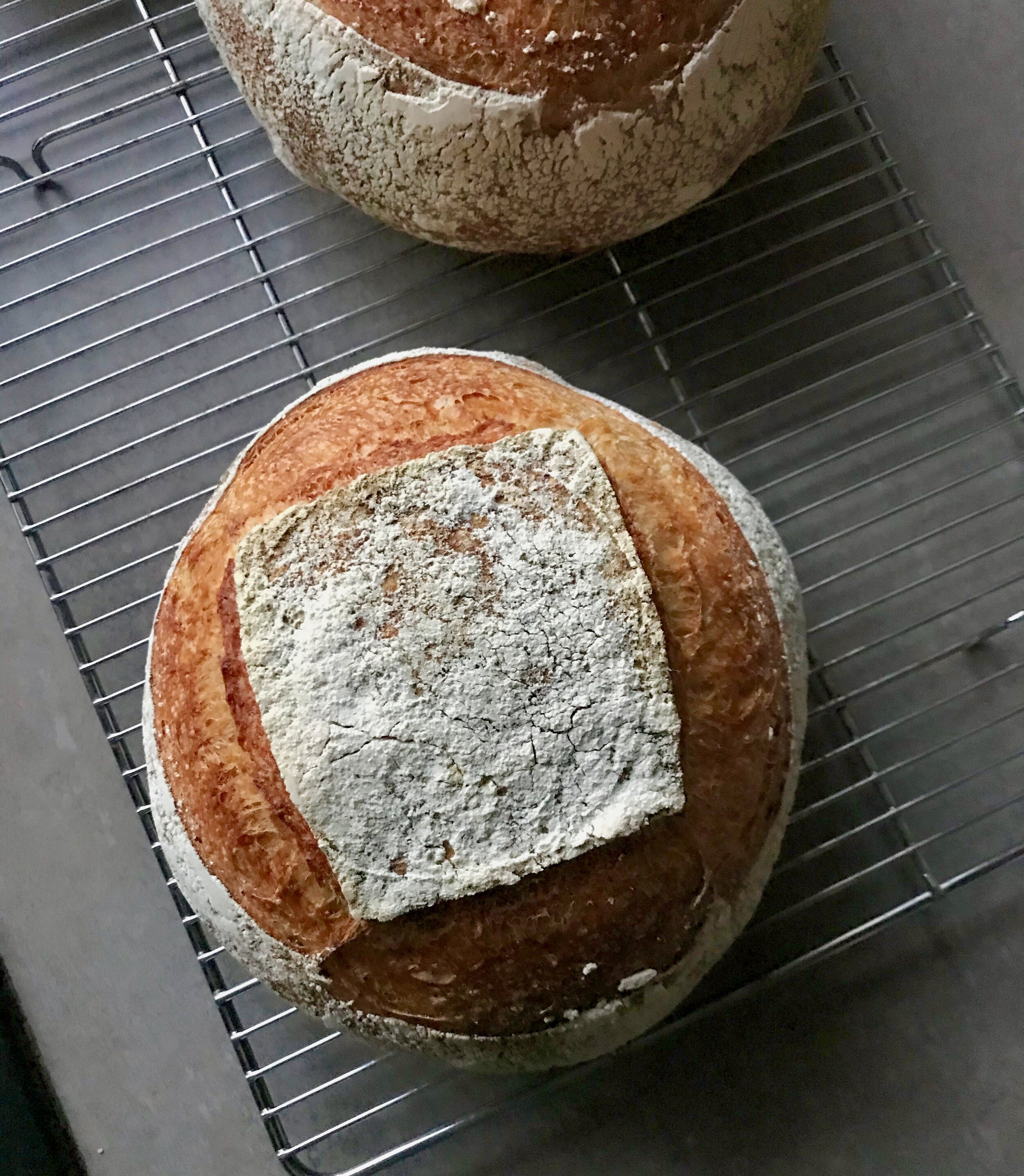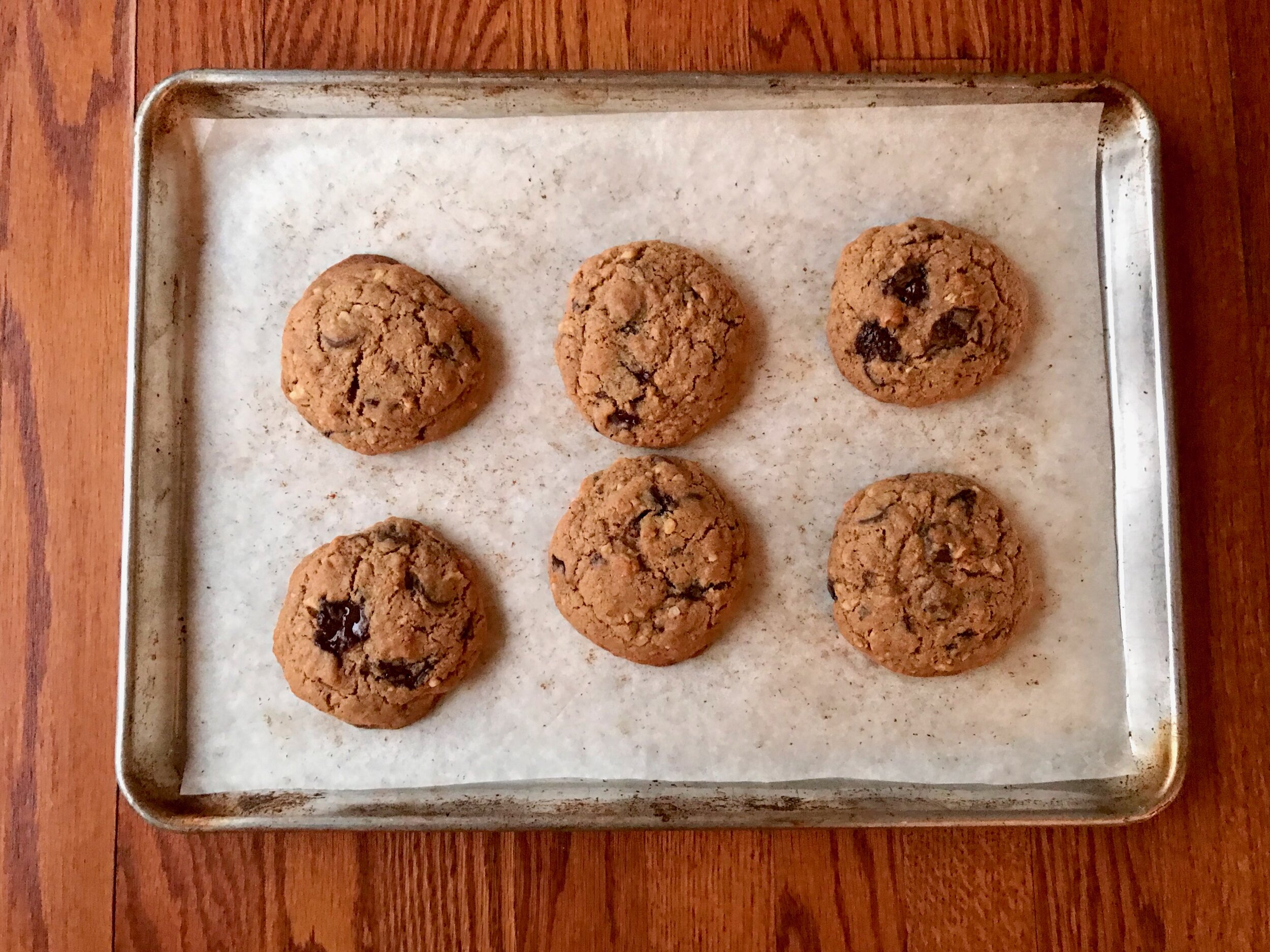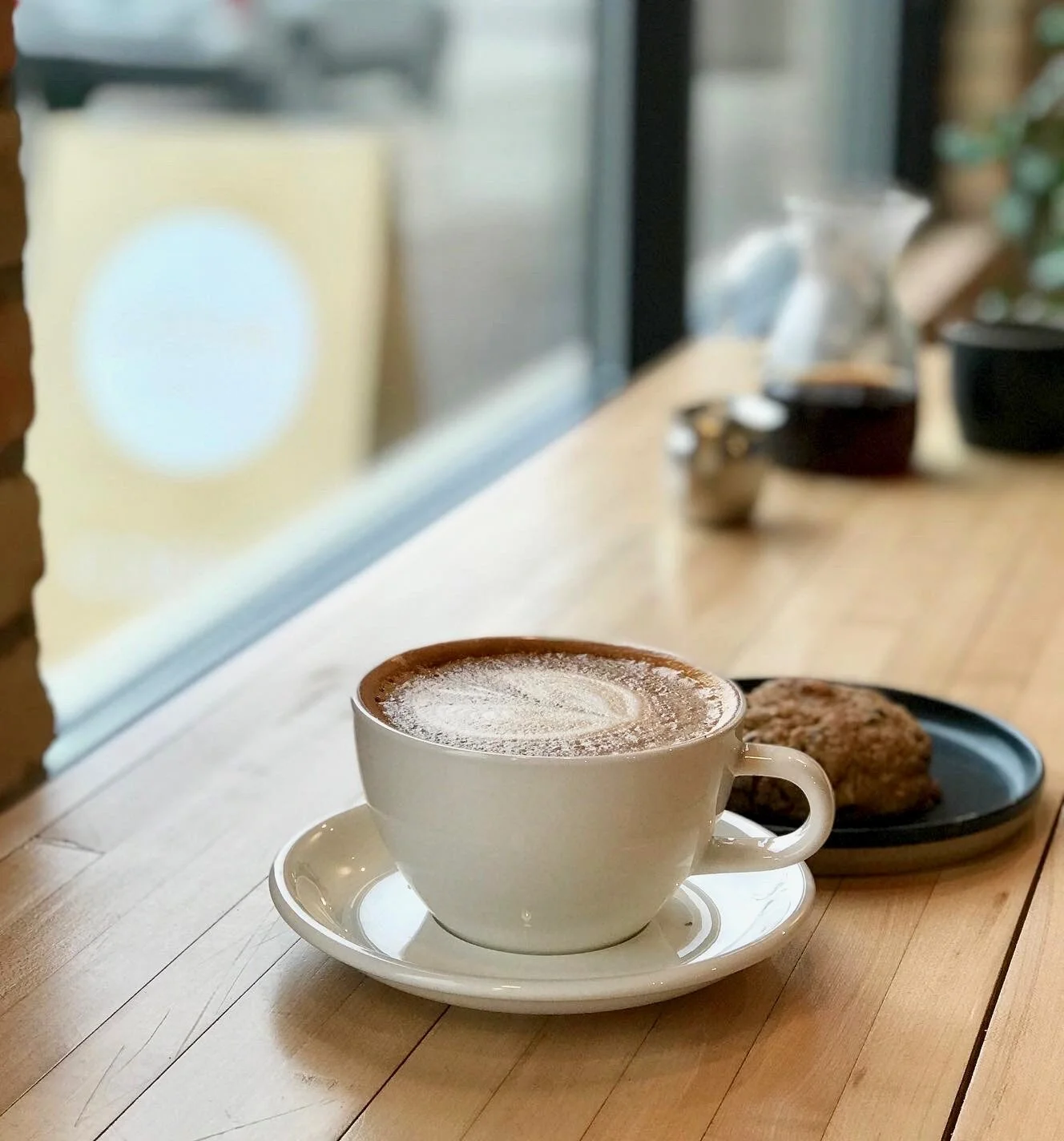I started the dough on Thursday night and was able to bake off the two loaves on Saturday mid-afternoon. There really was very little hands-on time. Just a lot of checking in to see how things were going, deciding when to slow things down in the fridge vs leaving it on the counter. I didn’t follow the timings exactly as written in the original recipe (which is very precise), mainly because my house is much colder than the temperature that he calls for you to rise the bread at. Not a big deal, but takes a lot more monitoring how the rising is going to figure out when to move on to the next step.
End result: This recipe turned out two beautiful loaves! Some of the best I’ve made. The crumb was tight and even, no big, uneven holes. It got some great oven spring and browned up well. The crust was thin and snappy. Overall extremely happy with this recipe and am excited to see what else I can do with it in the future!
——————————————————————————————
Beginner’s Sourdough Bread
From The Perfect Loaf
Ingredients
Levain
40 grams Mature sourdough starter (100% hydration)
40 grams Whole Wheat Flour
40 grams Bread Flour
80 grams water, at room temperature
Dough
748 grams Bread Flour
110 grams Whole Wheat Flour
49 grams Dark Rye Flour I did not have any rye flour so I used more of the same whole wheat flour
691 grams water (warm/cool water temperature to meet the desired dough temperature)
18 grams salt
184 grams mature, 100% hydration levain (from Levain Build, above)
Directions
LEVAIN: Mix together everything called for in the Levain Build section above in a clean jar in the morning and store somewhere around 74-76°F (23-24°C) ambient for 5-6 hours. Keep an eye on how your levain is progressing during this time. When its ready to be used it will be expanded, bubbly on top & at the sides, and smell almost a little sour.
AUTOLYSE: Using your hands mix all the flour and most of the water (reserve 50g water for later) called for in the “Dough Mix” section above in a bowl until all dry bits are hydrated. Cover the bowl and store somewhere warm (near your levain is convenient) for 1 hour. (Note that this autolyse stage does not incorporate or use salt or the levain build in any way, they are two separate entities at this point that will be mixed together later in the process.)
MIX: At this point your autolyse is complete and your levain is ready. Add salt, reserved water, and levain to your already mixed flour & water and mix thoroughly. I like to spread everything on top of dough resting in the bowl and use my hand to pinch all the ingredients together. Transfer dough to a tub or thick-walled bowl for bulk fermentation.
(At this point use your instant read thermometer to take the temperature of your dough to get your final dough temperature. If your FDT is below 78°F (25°C) next time use warmer water, and conversely, if it’s above 78°F (25°C) use cooler water.)
BULK FERMENTATION: At 76-80°F (24-26°C) ambient temperature bulk fermentation should go for about 4 hours. [I actually ended up bulk fermenting for close to 24 hours in my cool house, it’s been a very cold November and I keep the house at around 64 degrees at night, and during the day when I’m at work. Even with this much prolonged rise the dough did not seem over-risen. It worked out great in the end. But I had to keep checking on it and had to decide at what point did I think it was ready to shape. I ended up using my bakers intuition which seemed to work well this time] Perform 3 sets of stretch and folds during bulk fermentation, spaced out by 30 minutes.
Each set consists of 4 folds, one at the North, South, East and West sides. Wet your hands with a little water to prevent sticking and then lift up one side (North) of the dough with two hands. Stretch the dough up high enough just so that you can fold it completely over to the other side of the dough in the bowl. Rotate the bowl 180° and do the other side (South). Finish the other two sides (East and West) to complete the set. Let the dough rest 30 minutes, covered, between sets.
After that third set of stretch and folds, let the dough rest the remainder of bulk fermentation. During this time we let the flour ferment further, aerating it (making it rise), strengthening it and developing flavor.
At the end of bulk fermentation your dough should have risen anywhere between 20% and 50%, should show some bubbles on top, sides and the edge of the dough where it meets the bowl should be slightly domed showing strength.
DIVIDE AND PRESHAPE: Lightly flour your work surface and dump out the dough. With your bench knife in one hand divide the dough into two halves. Lightly flour your other hand and using both the knife and your hand turn each half of dough on the counter while lightly pulling the dough towards you. This gentle turning and pulling motion will develop tension on the top of the dough forming a round circle.
Let the dough rest for 25 minutes, uncovered.
SHAPE: Lightly flour the top of your dough rounds and the work surface. Working with one at a time, flip the round so the floured top is now down on the floured work surface.
Lightly flour your hands and grab the bottom of the round and stretch it lightly downward towards your body and then up and over about 2/3 the way to the top. Then, grab the left and right sides of the dough and stretch them away from each other, fold one side over toward the other and repeat with the other side.
Then, grab the top of the circle and stretch away from your body and fold down and over all the way to the bottom of the resting dough. You’ll now have a tight package that resembles a letter.
Finally, flip, or roll down the dough so the seams are all on the bottom and using two hands cup the top part of the round and drag the dough gently towards your body. The angle of your hands will gently press the bottom of the dough on the counter creating tension, forming a skin on the top of the dough as you drag.
After shaping, let the dough rest on the bench for a few minutes and then place seam-side-up into a towel-lined kitchen bowl that was lightly dusted with white rice flour.
REST AND PROOF: To prevent your dough from drying out overnight, place your bowls containing your shaped dough in plastic bags sealed shut with a rubber band. I will usually puff up the plastic bag around the bowl by opening it wide and then quickly closing the opening.
Once covered, let the dough rest on the counter for 20 minutes. Then, retard in the refrigerator at 38°F (3°C) for 16 hours. During this time overall fermentation will slow, but (good) bacteria activity will continue, contributing to a more complex flavor and deeper crust coloring.
BAKE: Preheat your combo cooker or Dutch oven inside your oven for 1 hour at 500°F. If you’re using a combo cooker, place the shallow side face up on one side and the heavier, deep side, face down on the other.
When you’re done preheating, take one of your plastic bag-wrapped loaves out of the fridge and unwrap it. Cut a piece of parchment paper so it fits over the top of your basket and place on a pizza peel. Invert the peel and parchment paper so they are resting on top of your basket containing your dough. Then flip the whole thing over. Remove the basket and your dough should be resting on the parchment.
Score these loaves at a 90° angle between the razor blade and dough. If you want a more pronounced “ear” at each score line, lower the angle between the blade and the dough (so the blade is close to horizontal with the dough).
While wearing your oven mitt, and with caution, pull out your shallow side of the combo cooker, or your Dutch oven base. Using your pizza peel, drag a corner of the parchment paper to slide your dough into the combo cooker. Place it back into the oven and cover the shallow side with the deep side to create a seal, or cover your Dutch oven with the lid.
Turn the oven down to 475°F and bake for 20 minutes. After 20 minutes, use your oven mitt to very carefully remove the top of the combo cooker or the lid of the Dutch oven. Close the door, turn the oven down to 450°F (232°C), and bake for 30 more minutes. If you are unsure if your bread is done, use your thermometer to test the internal temperature, it should register over 208°F (97°C).
When done, carefully use your oven mitt to remove the bread from the combo cooker and cool on a wire rack. Place the combo cooker or Dutch ovdn back in the oven and bring the temperature back up to 500°F. Repeat for the second loaf.
Wait 1-2 hours before slicing the bread (I know, it’s hard to do this) to ensure the interior is set.



